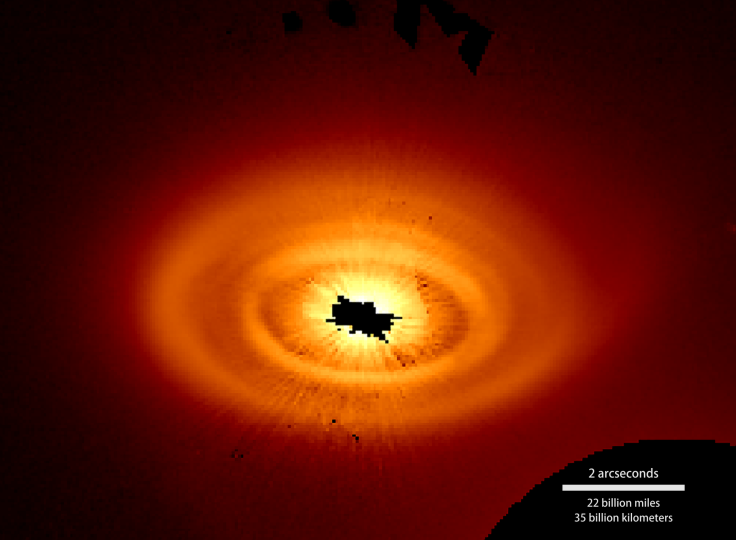Ultraviolet Light, Not Just Planets, Can Create Disk Patterns Around Stars
When stars form, there remains around them for the first few millions of years at least, a debris disk made up of gas and dust. And regular patterns in this disk, if any, are usually thought by astronomers to indicate the presence of planets in orbit around the star.
As planets form in the debris disk, they clear orbital passages in the disk that show up as patterns. But since young star systems are not stable, what with new planets being formed, the patterns formed by the planets’ orbits are not always ring-like. As the planets move inward or outward, they also create arcs and spirals and so on.
But it turns out those patterns may not be caused by planets at all, at least not always. Exoplanet hunters who rely on this telltale sign will need to be more careful, following a presentation Thursday at the ongoing 231st meeting of the American Astronomical Society in Washington, D.C.
Marc Kuchner, an astrophysicist at NASA’s Goddard Space Flight Center in Greenbelt, Maryland, who presented the findings of a research paper on the subject, said in a statement: “We’re exploring what we think is the leading alternative contender to the planet hypothesis, which is that the dust and gas in the disk form the patterns when they get hit by ultraviolet light.”
The ultraviolet component of starlight is high in energy, and when it hits grains of dust in the debris disk, the grains lose electrons, which in turn collide with and heat the nearby gas. Warmer gas has higher pressure, which causes it to trap more dust, which heats the gas more. This loop is known as the photoelectric instability or PeI.
Kuchner and Wladimir Lyra, an astronomy professor at California State University, Northridge, and research associate at NASA’s Jet Propulsion Laboratory in Pasadena, California, proposed in 2013 that PeI could explain why rings seen in some disks were narrow, and also predicted the presence of incomplete rings in some disks. These arcs were first directly observed three years later.

Alexander Richert, a doctoral student at Penn State in University Park, Pennsylvania, built on the simulations by Kuchner and Lyra, and the result was the new study by the three. In the study, Richert introduced another factor called radiation pressure. This refers to the miniscule physical force that is exerted by light on everything it comes across.
The study modeled how PeI and radiation pressure interact with each other to affect the movement of gas and dust in the debris disk around stars. Updating the 2013 simulation — which showed how rings and arcs would form — the 2017 model, by introducing radiation pressure, showed spirals could form in the disk as well, as have been seen around HD 141569A. This star is located about 320 light-years away and is the same one Kuchner and Lyra had used in their original simulation.
Lyra invoked Carl Sagan to drive home the point that just because planets can cause the patterns doesn’t mean that is always the case.
“Carl Sagan used to say extraordinary claims require extraordinary evidence. I feel we are sometimes too quick to jump to the idea that the structures we see are caused by planets. That is what I consider an extraordinary claim. We need to rule out everything else before we claim that,” he said.
The paper, titled “The interplay between radiation pressure and the photoelectric instability in optically thin disks of gas and dust,” has been submitted to the Astrophysical Journal and is currently available on the preprint server arXiv.
© Copyright IBTimes 2025. All rights reserved.




















